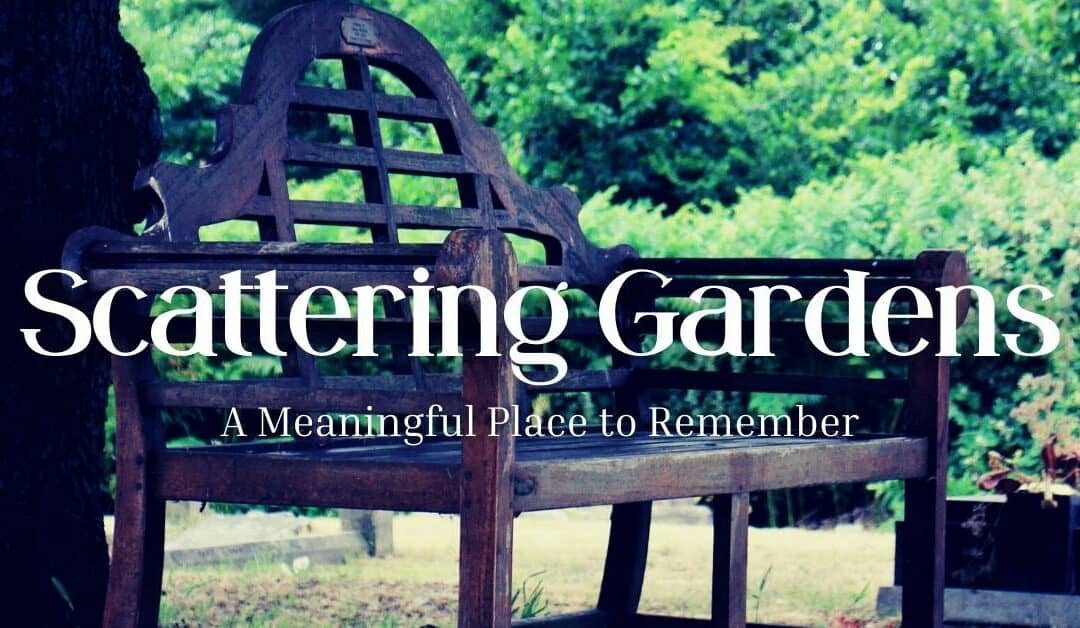When scattering cremated ashes of a loved one, many families choose a scattering garden near them, a designated area to scatter a loved one’s cremated remains. Usually found in cemeteries, these gardens offer families a permanent and meaningful place to remember their loved one.
Scattering gardens can be found all over the country, making it easy for families to find one and plan a memorial time together with loved ones.
If you’re looking for a place to scatter your loved one’s ashes, consider visiting a memorial garden near you!
What is Cremation Exactly?
The cremation process produces your loved one’s cremated ashes, often called “cremains.”
However, when choosing cremation, find a funeral home that offers direct cremation. With direct cremation, you can ensure that remains do not face shipping processing delays like a big box company. Your funeral director can also help you plan any funeral or memorial services to help your family grieve.
What Is a Scattering Garden?
Scattering gardens are designated areas in a cemetery where you may scatter cremated ashes. The cemetery often posts a wall or other memorial marker inscribing details about each person whose ashes rest there.
You can also often create memorial benches or plaques in the cremation garden to honor your loved one’s life. These are often laser-etched with names, dates, mottos, and more. Typically, you can choose the granite color for the bench and the metal for the marker. (1)
Funeral directors are an excellent resource for finding the best scattering gardens. Your local funeral home will know the cemetery directors and the condition of the properties and can help you find the best option for your family.
What About Other Options for Cremated Remains?
You and your loved ones may scatter your loved one’s remains in many areas worldwide. To ensure no problems, however, observe all applicable laws and regulations.
You can always keep some of your loved one’s ashes for a cremation garden, even if you also choose to scatter ashes in the ocean, a mountaintop, or a lake or park.
Traditional options for cremated remains include:
Scattering at Sea
This can be done by contracting with the operator of any type of vessel. The scattering can be left to the crew of the vessel or the family if they so wish.
Burial Ground
You can use a casket and bury cremated remains (cremains) in a cemetery. Usually, you buy a smaller plot space and install a marker or stone headstone, just as you would with a traditional burial.
Columbaria
These structures have compartments (niches) to place urns containing cremains. The niches are usually above ground and may be part of a mausoleum, chapel, or building in the cemetery. Some columbaria niches hold just an urn, while others include memorabilia. Each niche has a front protection tile made of glass, marble, bronze, granite, or mosaic. (2)
Mausoleums
These are large, above-ground structures that house numerous crypts, columbaria, or compartments to hold urns.
In most cemeteries you can also purchase a private mausoleum. A family will generally buy several lots and erect a small stone building to house casketed or cremated remains casketed. The type of structure, whether wall or enclosure, is at your discretion.
For instance, the family of Vera Wang has a large lot in Kensico Cemetery in NY with an immense “Wang” stone marker stretching across its expanse.
“Designer Vera Wang’s family memorial overlooks the Cohasset Plot, a seven acre hillside expanse which contains an abundance of decorative laser-etched monuments bearing Asian surnames. At dusk the ivory granite structure takes on a greyish hue.” (3)
Your limits are only your imagination and, of course, cemetery regulations.
Shared Obelisks
Obelisks are large stone structures that memorialize and give a place for ashes so that family and loved ones may visit. Multiple members of one family may buy an obelisk at a cemetery for all of their cremains to rest together. Historic Oakwood Cemetery in Raleigh offers this option. (4)
An Ossuary is also an above-ground structure holding the cremated ashes of many individuals. You can privately reserve an ossuary for a family or plan for internment in a community ossuary with a ledger commemorating the remains inside. (5)
You can check out Historic Oakwood Cemetery in Raleigh if you’re looking for a beautiful and historical place for cremated remains to rest. They provide multiple choices for placement of cremated remains, with niches available in their mausoleum, interment in a traditional single grave space or a family lot, and shared obelisks for multiple cremations.
Scattering Gardens in North Carolina
Many individuals plan to scatter their ashes in a park, the ocean, or someplace they remember fondly. And other times, families will split ashes into several urns so that everyone in the family has an urn.
However, with a scattering garden, you can leave ashes there and know everyone has a place to come and mourn the loss.
Many cemeteries offer areas for cremation scattering. Contact cemeteries to find out more information about scattering ashes at their facility. With cremation gardens and memorial parks across the state of North Carolina, you can easily find a place for your loved one.
You can also always scatter ashes on private land. You can always choose a meaningful location for your loved one’s garden on private property. And you can continue to scatter cremains there whenever a loved one in your family passes on. A cremation garden for your family is one way you can honor your loved one’s ashes and memory.
What Else Can Families Do With Ashes
Options are almost limitless for where to lay to rest the cremated remains of a loved one. Also called “cremains,” you can legally scatter remains in many places.
However, some parks or public areas may require that you have a permit before scattering. For example, if you want to scatter on a local lake’s walking trail, you’ll need to check their policies and any local laws first.
“A note on transporting cremated remains to a special place. Traveling with or shipping cremated remains domestically and internationally can require special containers, paperwork, and handling depending on the origin and destination locations. Talk to the funeral home and cemetery for their recommendations and services to make this as easy as possible.” (6)
Benefits of Scattering Ashes in a Scattering Garden
People move around quite a bit in our society, but numerous movies and TV shows depict characters visiting a cemetery to remember a loved one. As people, we often like to have a place to visit and remember a close loved one.
Some of the reasons it can feel right to scatter ashes in a garden include the following:
- It is “a focal point for memorializing the deceased.”
- “To remember, and be remembered, are natural human needs. Throughout human history, memorialization of the dead has been a key component of almost every culture. The Washington Monument, Tomb of the Unknowns and Vietnam “Wall” in Washington, D.C are examples of memorialization which demonstrate that, throughout our history, we have always honored our dead.”
- “Psychologists say that remembrance practices, from the funeral or memorial service to permanent memorialization, serve an important emotional function for survivors by helping to bring closure and allowing the healing process to begin.”
- Providing a permanent resting place for the deceased is a dignified treatment for a loved one’s mortal remains, which fulfills the natural human desire for memorialization. (7)
We Can Help
At Renaissance Funeral Home and Crematory, we create beautiful and memorable events to honor your loved ones. We also offer a Cremation Tribute Center where our direct cremations take place, and you can participate as much or as little as you like in that process.
If you would like more information about scattering gardens or other scattering options, please don’t hesitate to reach out to us. We are here to help and guide you through this difficult time. Contact us today and find out how we can help you make plans.


